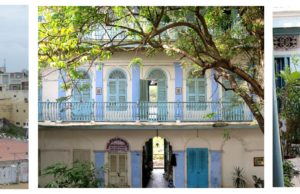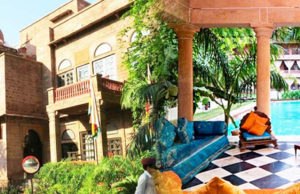
WoT's Hot
The temple of Juggernaut is at Puri; err… not exactly that but the temple of Jaganath is at Puri, The word etymology becomes obvious when you walk into the precinct of the temple of this most graphic of Hindu deity; the energy is overpowering. Large black face with large round eyes, there stands the incarnation of Vishnu the protector with his brother Balbhadra and sister Subhadara in the garbha griha (inner sanctorum) of this 11th century temple. Legend has it that King Indradyumna at the behest of the Queen rushed into the room while Vishnu was carving out the idol before he could complete it; that explains the stumps. One of the ‘char dham’ (four MUST pilgrimages for a devout Hindu) revolves around THE LORD and this temple, supporting a way of life and economy directly or indirectly related to his worship.
Without the temple it is doubtful Puri would have been popular as a beach resort; for the sea is choppy at most times and there is really no beach culture. But then Puri as a seaside destination was established way before the notion of beach culture was. Bengali literature and movies refer to this seaside resort galore; the protagonists traveling to this coastal town for a breath of fresh ‘sea air’ for their annual holiday or for recuperation from tuberculosis and other lung and heart ailment, including a ‘broken’ one.
Being the agnostic that I am, in the past I have always visited the temple at a non-worship hour when the crowd is thin; immersing myself in the architectural and sculptural splendor of the structure. It too is worship of a sort. But this time circumstances had other plans, and I found myself in the midst of fervorus devotion of thousands of people in the month of Ashwin (October) when devotees throng the temple to light diyas to their LORD. Long queues line the entrance to the garbha griha as it does to the bhog or prasad counter. There is definite method to the madness here. For a long time the temple had become a haven for rogue pandas (priests) who fleeced devotees almost at gun point till the Odisha State Govt. took matters in their own hands. Now things are much more organized. Devotees come from across the country and you can hear ‘Jai Jaganath’ in several languages simultaneously.
People sit in circles chanting and singing kirtanas and bhajans; collecting blessings at the small shrines dotted between the larger structure while there are those who do the parikrama, - walk around the temple praying-. A whole range of small enterprises run within the complex from selling coconuts and diyas smeared with ghee and ready for lighting to flowers and various malas (strings of auspicious beads) and more.
One of the most fascinating aspects here must be the pakwan (kitchen). Each day quintals of bhog or prasad are cooked in the temple kitchen. The system defies the assembly line of any modern factory; like a well-oiled wheel, lines of hands can be seen chopping vegetables, grating coconut, washing rice, grinding spices, carrying water from a underground well believed to be connected to the holy river Ganga at some source. The food is cooked in multiple earthenware dishes piled one upon the other with the fire at the bottom, assumedly in the principal of the early 20th century ikmik cooker. Wondering, if the inventor of the cooker, adapted the idea after a visit to the temple.
July is the time of the juggernaut. Pulled by millions of devotes three colossal chariots of the triad role down the broad road from the Shingahdwara (lions’ gate) of the temple to the Sri Gundicha temple. This is the ‘Rath Jatra’. After the British saw this overwhelming sight, the word became an allegorical reference to any literal or metaphorical force mercilessly destructive and unstoppable. So, Jai juggernaut! Oops! Pardon, I meant ‘Jai Jagannath’.
The temple of Juggernaut is at Puri; err… not exactly that but the temple of Jaganath is at Puri, The word etymology becomes obvious when you walk into the precinct of the temple of this most graphic of Hindu deity; the energy is overpowering. Large black face with large round eyes, there stands the incarnation of
Other Articles in India
What to read next
Featured articles

Welcome Festive Season in Glam, Latin Quarters Launches new #PujoBling Collection with Monami Ghosh
by WOT













































